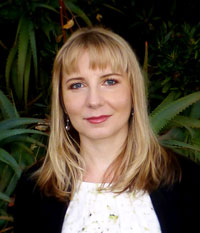What remains after the dust
for piano (2020)
Vera Ivanova’s “What remain under the dust” is a musical commentary to J.S Bach’s Invention VI. It makes use of micro-quotations, syncopation, octave displacement and invertible counterpoint. The piece echoes Bach’s intricate mixture of tonal and chromatic scalar motion, spatializing it across extreme registers. The resulting resonances become “remains” of the Baroque, seen through the dust of the modern times.
Program Notes:
What remains under the dust for piano solo was commissioned by the pianist Lorenzo Marasso for The Invention Project, which is to be premiered online on July 26, 2020.
Lorenzo conceived the idea of this project during the quarantine caused by the 2020 COVID-19 pandemic, when all public performances were cancelled and he had to reinvent himself by performing online and looking for new musical adventures. Because Lorenzo’s one of the most beloved works is J.S. Bach’s set of 15 Inventions and Sinfonias, he came up with the idea to commission 15 different contemporary composers to write their own inventions, which he would perform alongside Bach’s inventions and sinfonias, chosen by composers as referential pieces for their own short compositions.
When I was choosing an invention and sinfonia to base my piece on, I found myself attracted to half-chromatic syncopations used in contrary motion in Invention VI and to the fact that Bach used the same theme for Sinfonia VI in E major. I have already known this invention and used it in my teaching practice as an example of unsurpassed mastery of invertible counterpoint. To express my admiration of Bach’s work and the Invention in E major in particularly, I wrote a short companion piece in a manner of a musical commentary. I made use of micro-quotations, toying more with the syncopation, which in my piece comes with octave displacement and in invertible counterpoint. Bach’s harmonic and melodic language is made of intricate mixture of tonal and chromatic scalar motion, which I echoed in my piece, spatializing scalar motion across extreme registers. That created sonorous resonances, which I thought of as “remains” of the Baroque language of Bach as seen through the dust of the modern times.
Lorenzo conceived the idea of this project during the quarantine caused by the 2020 COVID-19 pandemic, when all public performances were cancelled and he had to reinvent himself by performing online and looking for new musical adventures. Because Lorenzo’s one of the most beloved works is J.S. Bach’s set of 15 Inventions and Sinfonias, he came up with the idea to commission 15 different contemporary composers to write their own inventions, which he would perform alongside Bach’s inventions and sinfonias, chosen by composers as referential pieces for their own short compositions.
When I was choosing an invention and sinfonia to base my piece on, I found myself attracted to half-chromatic syncopations used in contrary motion in Invention VI and to the fact that Bach used the same theme for Sinfonia VI in E major. I have already known this invention and used it in my teaching practice as an example of unsurpassed mastery of invertible counterpoint. To express my admiration of Bach’s work and the Invention in E major in particularly, I wrote a short companion piece in a manner of a musical commentary. I made use of micro-quotations, toying more with the syncopation, which in my piece comes with octave displacement and in invertible counterpoint. Bach’s harmonic and melodic language is made of intricate mixture of tonal and chromatic scalar motion, which I echoed in my piece, spatializing scalar motion across extreme registers. That created sonorous resonances, which I thought of as “remains” of the Baroque language of Bach as seen through the dust of the modern times.
- Duration
- c. 2 minutes
- Premiere
- July 26, 2020
- Score Sample
Performances:

 Home
Home News
News Performances
Performances Works
Works CV & Bio
CV & Bio Scores
Scores CDs
CDs Photos
Photos Newsletter
Newsletter Contact
Contact
